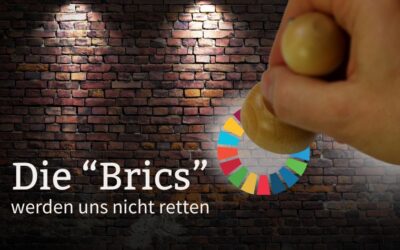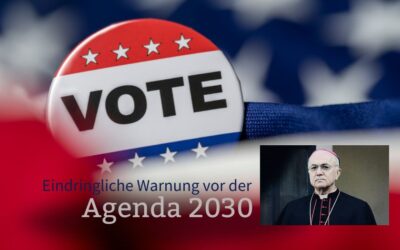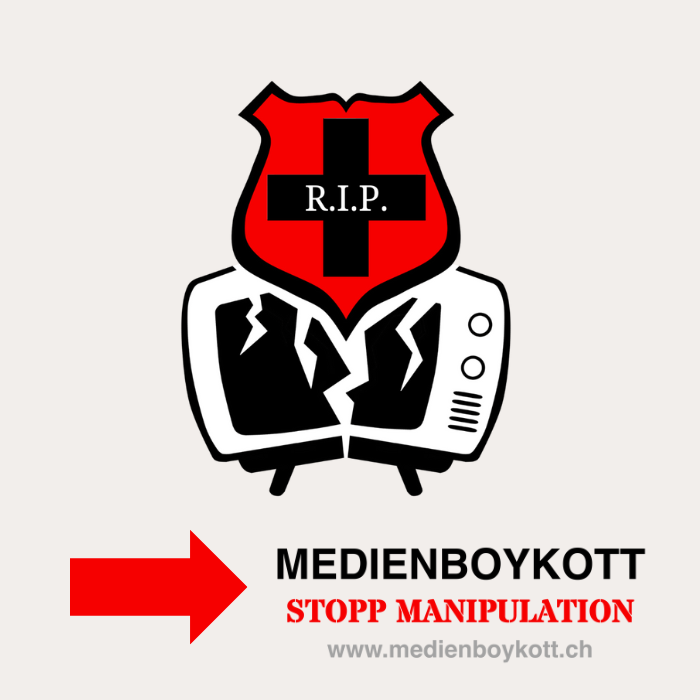The countdown to the WHO pandemic treaty is on
The WHO pandemic treaty is annoying – can't we finally draw the line and get out? Apparently not!
Anyone who thought the WHO (World Health Organization) pandemic treaty was off the table is wrong! Negotiations on this new WHO pandemic agreement are entering the hot phase as key figures, led by WHO Director-General Tedros Adhanom Ghebreyesus and the Office of the Intergovernmental Negotiating Body (INB), push for an agreement. A crucial week of negotiations will begin on November 4, 2024 , and will last until November 11. The most recent official version of the pandemic treaty is still dated May 27, 2024, and is publicly available. However, there is also an unofficial updated version that is not publicly available. An even newer version should have been available since October 18, 2024, but it remains secret.

"Pandemic Contract Lite"
The negotiations, led by the WHO and supported by its Director-General Tedros Ghebreyesus as well as numerous lobbyists and representatives of the 194 member states, appear to be under great pressure. In fact, they could adopt an unfinished, simplified version of the treaty – the so-called “Pandemic Treaty Lite” or a “streamlined ” version – before the end of 2024. In this streamlined version, the most contentious points have been removed and deferred for later elaboration by the so-called Conference of Parties , a body to be set up only after the agreement has been adopted by the World Health Assembly ( WHA ). Just like the IPCC, this is a body of international bureaucrats that will meet regularly to discuss and decide on health issues. Its decisions, which are usually taken without direct national parliamentary votes, thus cleverly bypass the democratic participation of the affected populations.
In the current version, many passages are already marked in green, which signals that they are largely considered to be decided. These "green-marked" texts contain plans for a billion-dollar expansion of the pharmaceutical and medical infrastructure under the pretext of "fair access to pandemic-related products." Article 10 on sustainable, geographically diversified production and Article 20 on sustainable financing are particularly worth mentioning here.
Obvious double standards
Despite the WHO's pledge that "nothing is agreed until everything is agreed," key sections of the treaty have already been agreed - a testament to the blatant double standards. The hope is to agree at least some kind of framework - a reduced agreement - by November 11, 2024, and then to officially adopt it during a special session of the World Health Assembly in December 2024, while the Biden administration is still in office. The treaty was originally supposed to be in place by May 2024, but the World Health Assembly granted an extension, meaning the treaty will be concluded by May 2025 at the latest. So there is still plenty of time.
The Federal Council does not want to discuss it publicly either
The WHO chief continues to annoy us by droning on again that we need to take tougher action against "anti-vaxxers" (anti- vaccinationists ) by, among other things, banning disinformation ( as defined by the WHO) . Negotiations on the WHO pandemic treaty are continuing merrily, and in Switzerland the question is: Why are we still involved? Can't we finally put an end to this pharmaceutical business model at the expense of global health and get out of this global contract game that has nothing to do with health?
But wait – is that even a realistic option? Apparently not! Not for Switzerland. After all, it has its own, strongly networked pharmaceutical industry, which is not entirely unimportant economically and does generous “lobbying” – including in Bern. Who wants to sacrifice the buoyant profits? Or leave them to others?
In the end, we can all talk ourselves into it: what is a little extra burden for taxpayers when, as a good investor or pension fund owner in Swiss pharmaceutical stocks, you ultimately profit from the boom? If “some” Swiss suffer serious injuries or deaths as a result of the administration of new drugs, this is “priced in” in the business model. There is always a little loss.
Don’t you want to upset the main sponsors?
One could assume that this global pharmaceutical business model, which is apparently profitable for Switzerland, is a key reason why the Federal Council vehemently refuses to bring the WHO pandemic treaty and the International Health Regulations (IHR) to Parliament and then to the people (incidentally, another excellent example of how direct democracy works). Don't you want to annoy your "main sponsors"? After all, the WHO has just included a PCR test from Novartis to detect monkeypox infection (mPox) in its so-called Emergency Use Listing (a prequalification ) , which is hopefully just as reliable as the well-known SARS-CoV-2 test (the gold standard at the time) and can hopefully also detect asymptomatic disease with absolute reliability. After Novartis did not get enough of a chance in the so-called Corona crisis and only filled bottles for Pfizer , while their therapeutic agent Ensovibep has not yet been approved, it is now their turn. That's how it is in the WHO pharmaceutical cartel: every cartel member gets a turn and gets to reap the rewards.
An “ingenious” strategy: When health and profit go together
The strategy behind the WHO pandemic agreement is nothing short of ingenious - if frightening. It is a mixture of clever marketing, lobbying and the ability to bend political mechanisms in their favor. The ingredients? A developed vaccine (whether effective or not / harmful or not) , a global threat and a network that leaves nothing to be desired in terms of distribution.
The “Pandemic Business Model” in 7 Steps
Here is a step-by-step guide on how the “pandemic business model” works:
- First create fear, then demand
The first step is to identify a health risk – often alleged viruses or newly discovered diseases that make great headlines. The media narrative is intensively fed with reports and figures that exaggerate the risk and threat. Global fear then ensures that governments are willing to invest massive sums to “protect the population”.
- International agreements as levers
This is where international negotiations come into play, ensuring that such health products are anchored not only nationally but globally. Treaties such as the WHO pandemic treaty create the legal basis for drugs and vaccines to be purchased quickly and without delays in the event of any "threat" - at taxpayers' expense. Big Pharma thus has a guaranteed buyer for its products, regardless of their actual effectiveness or price.
- Development aid as a cover
Then comes the "helper in need" effect. Wealthy countries like Switzerland also pay for developing countries through the agreements in order to distribute vaccines and medicines there. But these payments rarely go directly into the countries' health systems, but rather directly to the pharmaceutical companies. These countries often have few alternatives because dependencies have been created. Local politicians and officials become compliant and cooperate with this money - so money flows here that secures influence and nips any critical opposition in the bud.
- The Domino Effect: Patents and Licenses
Of course, Big Pharma has taken precautions: the drugs are patented and protected, so that even if they are very successful (or, let's say, widely used), other manufacturers are left out. Even if developing countries want to produce the drugs themselves, they are not allowed to do so due to the contracts and patents. This ensures a monopoly position for years, if not decades. Prices remain high, and countries must continue to buy from the same manufacturers, even if cheaper alternatives are possible. Mercifully, however, the cartel members set up production facilities in these countries to provide the ruling class there with an opportunity to earn income.
- Lobbying and political influence
The pharmaceutical giants invest heavily in lobbying - in every country and also in global organizations such as the WHO. They influence which health risks are set as priorities and what the regulations look like. Former pharmaceutical people sit on supervisory boards or advise health authorities, which ensures that the decisions are always profitable for the industry in the end.
- crises as a permanent source of income
Through clever marketing and the manipulation of perception, every health risk is blown up into a major threat. New vaccines, regular boosters, additional medications - the "solutions" are always in the pipeline, and the contracts ensure that they are accepted. The concept of pandemic prevention thus becomes a permanent source of income.
- The “right occasion” and the continuous loop model
Once is never enough. As soon as the first round of vaccinations is complete, the next round of "boosters" and "booster" doses begin. The subscription model is the pinnacle of this business model: Health authorities around the world place a new order every year to ensure the next round of vaccinations. The media is only too happy to play up the hype about the latest variant and the corresponding booster dose, and the population is trapped in a perpetual cycle of "necessity". Give us this day our daily vaccine. Amen.
The result? Perfected crisis marketing
This creates a closed pipeline for pandemic prevention that not only promises a false sense of security, but above all profits - constant, reliable and on a global level. The public is kept happy with well-thought-out strategies, and thanks to the pandemic agreement, it is ensured that demand will remain in the future. A masterpiece of crisis marketing that shows how much potential there is in a global threat (which may well be self-staged) - provided you know how to press the right buttons.
No wonder that Switzerland is always ahead of the game – when it comes to the feeding trough, people here are more punctual than the famous Swiss clock
In this respect, one can expect nothing less from the Swiss government - after all, the country is extremely proud of its own pharmaceutical industry, which is celebrated as a "Swiss success story". It is a dance around the golden calf. The moral bar has always been pleasantly low; they just know how to conduct lucrative business without interference. And who wants to ask too many questions?
And so everything remains perfectly under control - not under the control of the population, of course, but of those who benefit at the top of the "pandemic market". The Swiss Federal Council? It sees no need for unnecessary discussions in parliament or even in public. After all, the citizens trust that "those at the top" know what they are doing. Why risk transparency when the deals are going so well? A referendum? Better not. After all, who wants to risk the people interfering when it comes to lucrative agreements that keep pharmaceutical profits flowing? That creates jobs. And for the little collateral damage - well, that has already been accounted for as "side costs", as always. The Swiss pharmaceutical world continues to turn happily, and the health insurance contributors and the taxpayers pay. So what's the problem?
Dear Federal Council, just say that it is so! Then the “dithering” about the IHR and the pandemic treaty will be over.
WE clarify
“The BRICS” will not save us!
The final declaration of the BRICS community of states at their summit in Kazan suggests that they will hardly save us from the familiar agendas.
Archbishop Vigano warns against Agenda 2030 and his agent Harris
A remarkably insightful description of what is at stake in this election from Catholic Archbishop Carlo Vigano.
Switzerland is to become a nature reserve – soon
Nature should belong to those who can afford it. Why does Swiss politics senselessly – like dreamers – lend themselves to this madness?
Please support our awareness campaign!
Please help us to finance the printing and postage costs (B-Post to all Swiss government representatives) as well as the professional translations into French, Italian and English! We also expect other expenses; a legal defense fund may also be required.
Thank you very much!
Support as a sponsor
Support as a patron










 Tłumacz
Tłumacz
0 Comments